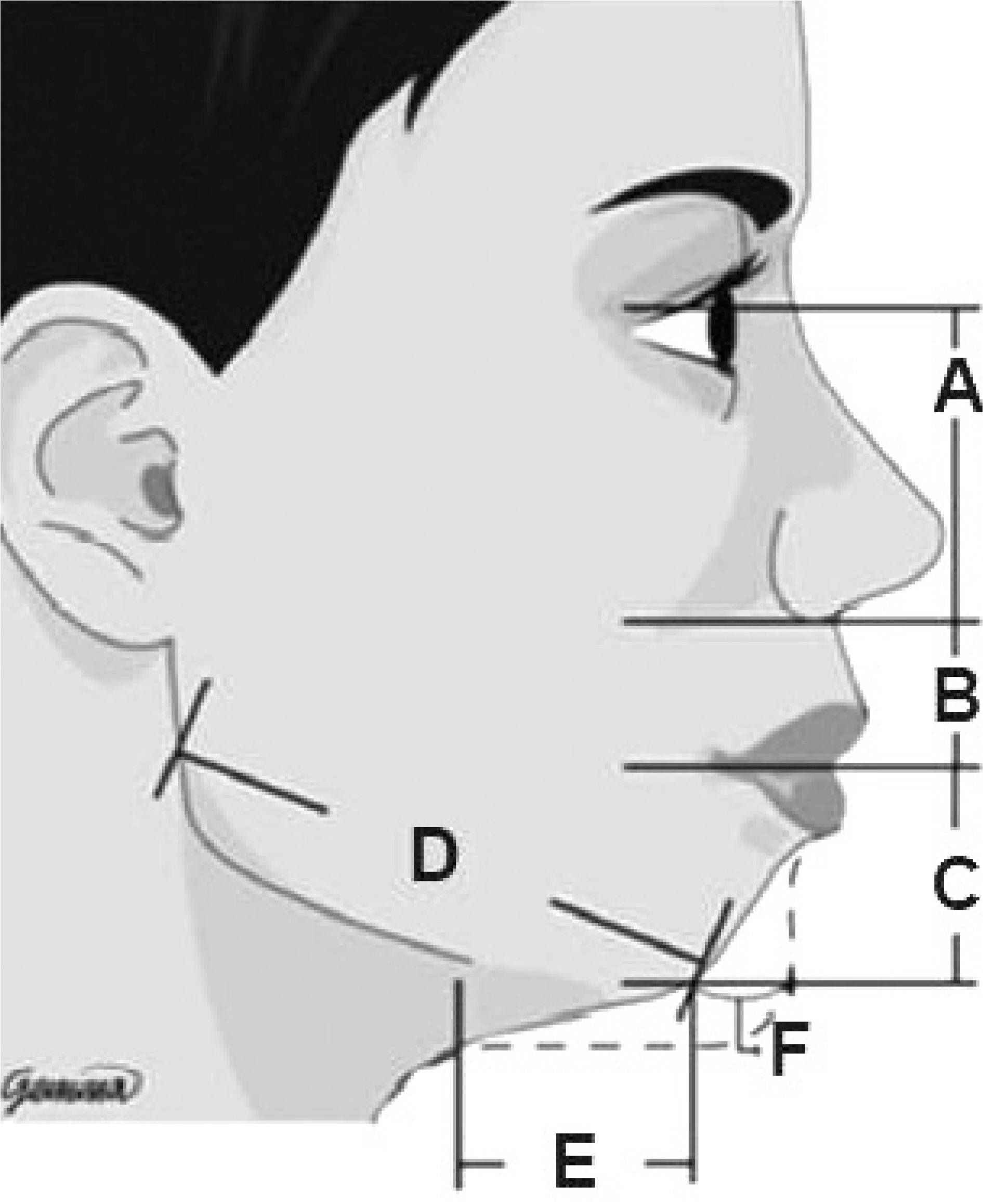J Rhinol.
2015 Nov;22(2):96-102. 10.18787/jr.2015.22.2.96.
Correlation Analysis between Anthropometric Measurement and the Results of Seep Questionnaires in Patients with Obstructive Sleep Apnea
- Affiliations
-
- 1Department of Otorhinolaryngology, School of Medicine, Catholic University of Daegu, Daegu, Korea. hsseung@cu.ac.kr
- 2Department of Psychiatry, Gil Medical Center, Gachon University, School of Medicine, Incheon, Korea.
- 3Department of Otolaryngology, Gil Medical Center, Gachon University, School of Medicine, Incheon, Korea.
- 4Department of neurology, Gachon University, Gil Medical Center, Incheon, Korea.
- 5Department of neurology, Catholic University of Daegu School of Medicine, Daegu, Korea.
- KMID: 2223204
- DOI: http://doi.org/10.18787/jr.2015.22.2.96
Abstract
- BACKGROUND AND OBJECTIVES
Obstructive sleep apnea (OSA) is the most common form of sleep-disordered breathing and affects quality of life. Several questionnaires have been developed for screening OSA. The aim of this study was to compare the anthropometric measurements of OSA patients using sleep questionnaires as a tool to screen patients with OSA. MATERIALS AND METHOD: This study enrolled 126 adult OSA patients. All subjects underwent overnight polysomnography (PSG) and were measured for body mass index (BMI), neck circumference, waist circumference, and tonsil size. Patients were screened using the Epworth Sleepiness Scale (ESS), Pittsburgh Sleep Quality Index (PSQI), Berlin questionnaire (Berlin Q), and STOP questionnaire (STOP Q). Correlation and multiple regression analyses were conducted to determine the predictive value of the anthropometric measurements of OSA patients.
RESULTS
ESS, Berlin Q, and STOP Q results were associated with apnea hypopnea index (AHI), minimal oxygen saturation of PSG and BMI, neck circumference, waist circumference, and hip circumference of OSA patients. However, facial contour did not significantly influence the results of sleep questionnaires.
CONCLUSION
Some anthropometric characteristics are associated with sleep questionnaire results. Not only sleep questionnaires, but also anthropometric data can be used as predictive tools of OSA.
MeSH Terms
Figure
Reference
-
References
1). Bearpark H, Elliott I, Grunstein R, Cullen S, Schneider H, Allthaus W, et al. Snoring and sleep apnea. A population study in Australian men. Am J Respir Crit Care Med. 1995; 151:1459–65.
Article2). Friedman M, Ibrahim H, Joseph NJ. Staging of obstructive sleep apnea/hypopnea syndrome: A guide to appropriate treatment. Laryngoscope. 2004; 114:454–9.
Article3). Choi JH, Jun YJ, Oh JI, Jung JY, Hwang GH, Yum GH, et al. Impact of open-mouth breathing on upper airway anatomy in patients with sleep-disordered breathing. J Rhinol. 2012; 19:55–9.4). Nam WH, Park KM, Lim EJ, Kim YH, Sin CM, Lee HW, et al. Correlation analysis between SF36 and polysomnographic measures in patients with OSAS. Korean J Otolaryngol. 2007. 50. ;896–902.5). Kwon C, Shin SY, Lee KH, Cho JS, Kim SW. Usefulness of Berlin and STOP questionnaires as a screening test for sleep apnea in Korea. Korean J Otolaryngol. 2010; 53:788–72.
Article6). Li KK, Kushida C, Powell NB, Riley RW, Guilleminault C. Obstructive sleep apnea syndrome: a comparision between Far-East Asian and white men. Laryngscope. 2000; 110:1689–93.7). Kang SG, Shin SH, Lee YJ, Jung JH, Kang IG, Park I, et al. Clinical and physical characteristics that affect apnea-hypopnea index in suspected obstructive sleep apnea patients: the preliminary study. Korean J Biol Pscychiatry. 2013; 20:54–60.8). Abrishami A, Khajehdehi A, Chung F. A systemic review of screening questionnaires for obstructive sleep apnea. Can J Anaesth. 2010; 57:423–38.9). Sun LM, Chiu HW, Chuang CY, Liu L. A prediction model based on an artificial intelligence system for moderate to severe obstructive sleep apnea. Sleep Breath. 2011; 15(3):317–23.
Article10). Musman S, Passos VM, Silva IB, Barreto SM. Evaluation of a prediction model for sleep apnea in patients submitted to polysomnography. J Bras Pneumol. 2011; 37:75–84.11). Chervin RD, Aldrich MS. The Epworth Sleepiness Scale may not reflect objective measures of sleepiness or sleep apnea. Neurology. 1999; 52:125–31.
Article12). Park KM, Nam WH, Lim EJ, Song SH, Lee HW, Kim JS. Correlation analysis between self-reported measures in patients with OSA. Korean J Otorhinolaryngol-Head Neck Surg. 2007; 50:888–95.13). Netzer NC, Stoohs RA, Netzer CM, Clark K, Strohl KP. Using the Berlin Questionnaire to identify patients at risk for the sleep apnea syndrome. Ann Intern Med. 1999; 131:485–91.
Article14). Chung F, Yegneswaran B, Liao P, Chung SA, Vairavanathan S, Islam S, et al. STOP questionnaire: a tool to screen patients for obstructive sleep apnea. Anesthesiology. 2008; 108:812–21.15). Caffo B, Diener-West M, Punjabi NM, Samet J. A novel approach to prediction of mild obstructive sleep disordered breathing in a population-based sample: the Sleep Heart Health Study. Sleep. 2010; 33:1641–8.
Article16). Shin KJ, Kim SE, Ha SY, Park JS, Park BS, Sohn JH, et al. Predictors of excessive daytime sleepiness in Korean soring patients. J Rhinol. 2014; 21:103–7.
- Full Text Links
- Actions
-
Cited
- CITED
-
- Close
- Share
- Similar articles
-
- Pediatric sleep questionnaires for screening of obstructive sleep apnea syndrome
- Difference of Polysomnographic, Anthropometric, Physical and Radiologic Findings in an Obstructive Sleep Apnea Syndrome Patient with Excessive Daytime Sleepiness
- Pathogenesis of Obstructive Sleep Apnea
- A Case of Huge Lingual Tonsillar Hypertrophy Causing Obstructive Sleep Apnea in Adult
- Complications of Obstructive Sleep Apnea


